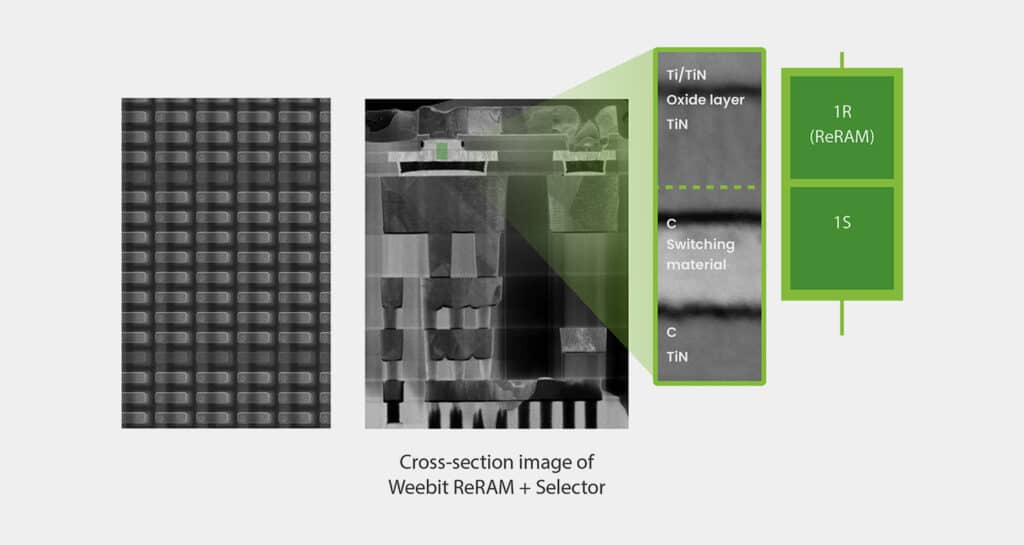Discrete Stand-alone Chip Development
ReRAM + BEOL Selector: The Key to Discrete Chips
One of the critical considerations when developing a discrete memory solution is the choice of selector technology. A selector is a key element in memory technologies, enabling optimized access to specific bits within a memory array. In the embedded space, a front-end of line (FEOL) transistor is typically used as the selector device. This is known as a 1T1R (one transistor, one resistor) architecture. However, such a 3-terminal device takes up too much die size for the discrete market, and therefore cannot support the densities required.

To address the requirements of the discrete chip market, a 1S1R (one selector, one resistor) architecture is needed. 1S1R uses a 2-terminal selector which can be used in crossbar architectures and can therefore enable higher densities than 1T1R. It also enables 3D integration.
Together with our research partner CEA-Leti, we developed a BEOL selector that’s integrated with the ReRAM cell between two metal layers. We’ve demonstrated the integration of our ReRAM cell with Leti’s selector, which will enable Weebit ReRAM to scale to the advanced processes and high memory densities needed for discrete ReRAM chips.
A BEOL selector is ideal for discrete ReRAM (RRAM) as it enables the smallest ReRAM Bitcell, as small as 4F2, as well as excellent endurance, low energy consumption, and high switching speed. The combination of Weebit ReRAM and Leti’s BEOL selector reduces the memory bit size by ~10X.
